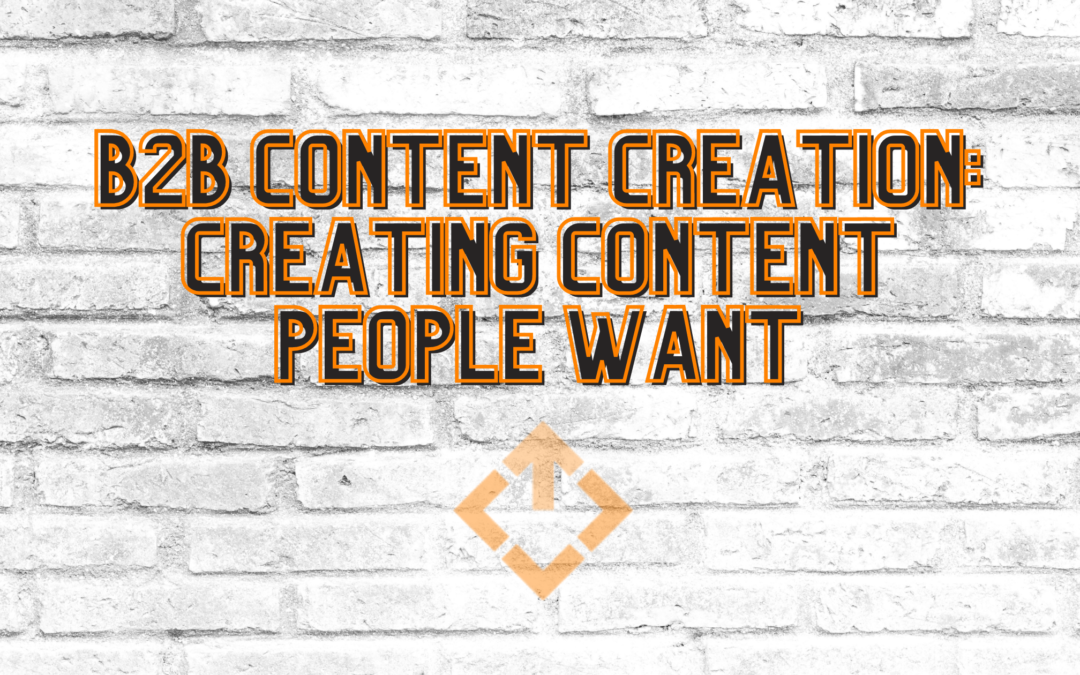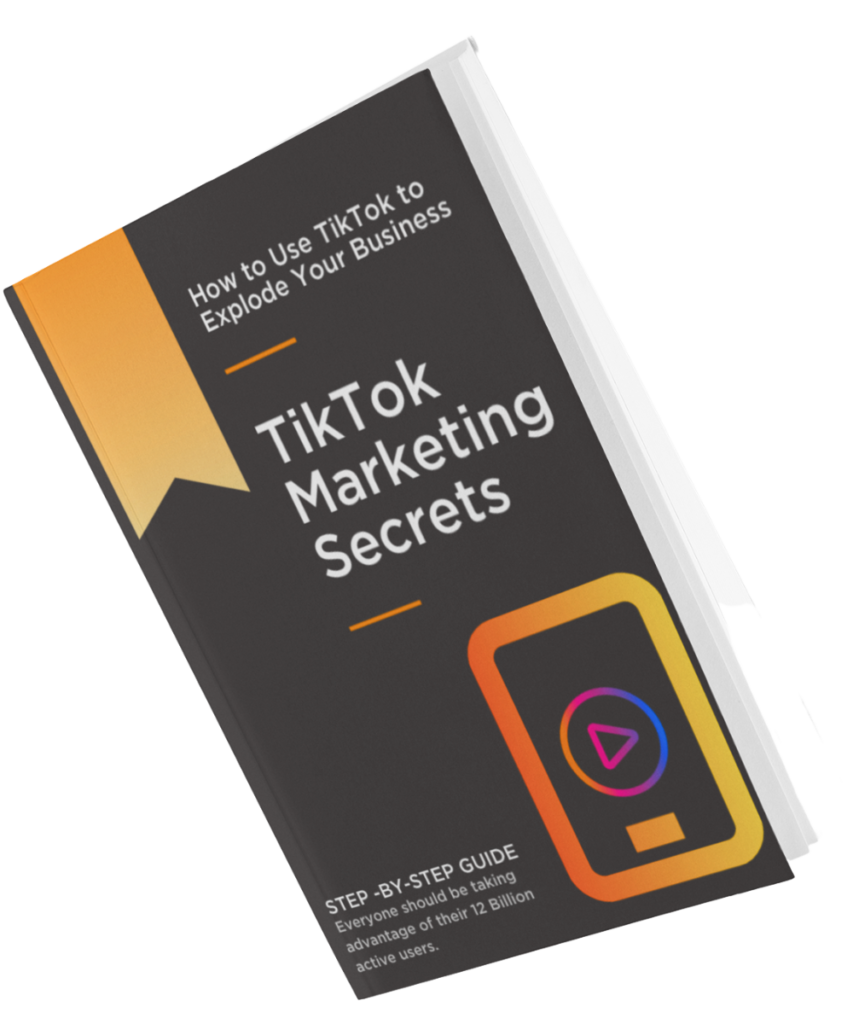B2B Content Creation: Creating Content People Want
B2B Content Creation is a significant part of any marketing strategy, especially in the B2B world. It generates over 3x as many leads as outbound marketing and costs 62% less.
Although that ROI sounds great, content creation is a very broad and complicated task. Many times, we underestimate what’s involved because it’s not just about creating content, but also about understanding the needs of an audience (and let’s face it, those are always changing).
Why is Content Marketing Important for B2B?
In the past, word-of-mouth was the heartbeat behind the life of B2B businesses alike. As we’ve progressed as a society, that’s changed. However, one aspect of B2B that has remained the same has been the relationship aspect within the B2B space. Think of your content as just an extension of establishing a relationship.
B2B content focuses on attracting and engaging prospects, rather than just interrupting them with messages. Content marketing isn’t just used to attract new and potential customers, but it also helps with retaining and building trust with your current customers. That’s why when it comes to your content creation, diversification is key in order to hit your audience from many different angles.
Avoid These Common Mistakes
B2B content marketing is a complex game, and many times it can take a lot of trial and error to become successful. But avoiding these mistakes will help set you on a path to success:
Neglecting research:
If you don’t take the time to do your due diligence, you’ll never really know what your audience is looking for. Ultimately, your efforts will be wasted. This means studying your audience and their search habits to ensure your content will be found and make an impact.
Overly Promotional:
There’s a time and place to give your organization a plug, but in most phases of the buyer’s journey, you are gonna want to avoid aggressive plugs until your buyer has established a deep interest in what you are offering.
Not Diversifying:
Some marketers find success in one strategy and start to neglect other methods of content marketing.
Creating Content for The Buyers Journey
In a B2B buyer’s journey, there are three different stages to keep in mind: Awareness, Interest, and Conversion. The content that you create should be tailored to the stage of the customer journey.
For example, awareness content is used to introduce a product or service. The main purpose is to get people’s attention and make them aware of what you are offering. On the other hand, conversion content is used to convince customers to buy your product or service once they have a pretty significant idea of who you are and how you can help them.
Here are some examples of content ideas that you could use throughout each stage.
Awareness
Here we are looking at content that will educate a potential customer on a product or service. This type of content should address pain points and leave customers with some kind of value while positioning you as the expert. Focusing on less aggressive tactics where the emphasis is on the value is a great way to hook your audience and keep them coming back.
- Ebooks – A lead magnet tactic that just asks for a tiny bit of information (such as name or email) to access a helpful guide that will benefit their business somehow. These are usually packed with helpful infographics, statistics, and data.
- Blog Content – Blog content can be used for any phase of the buyer’s journey, but specifically during awareness, creating how-to’s, guides, and checklists are helpful ways to provide value and demonstrate thought leadership. Make sure content in this phase addresses pain points.
- Podcasts– Podcasts generally require a lot of planning and require you to be consistent, but it’s a great way for potential customers to engage with your brand in a more personal way while gaining value through insightful topics.
- Email – This is another tactic that can be used at any stage, but for awareness purposes, it’s great to create a nurture sequence to continue to stay in front of your prospects. This can be filled with articles, blog content, or any guides you create.
Remember, the content created in this phase is often the first point of contact between you and your potential customers. If it comes off too overly salesy, they will move on.
Interest
This is the second phase of the buyer’s journey where heavy research is happening on their end, so it’s important to create content that supports their efforts in making a decision. You can plug your business a little more in this phase, but you really want to focus on others and those you’ve already helped reach success in this phase.
- Case Studies – These are in-depth stories that cover a customer’s pain points before working with you, the process of getting started, tangible results, and where your relationship with this customer is now. It’s a great way for potential customers to picture themselves in your customer’s shoes.
- Webinars – Webinars give you the opportunity to demonstrate thought leadership, connect, and further educate prospective customers. Usually in presentation form, these insightful events can further your prospects along the buyer’s journey if they have a good experience.
- One-Pagers – These informational sheets can be used digitally or in-person (such as at an event) and can include product or service highlights, benefits of working with you, stats, and even some current customer quotes.
Conversion
At this phase, a prospect is really into what you are offering, but they still haven’t fully committed. Creating content that helps move them into a full-on customer is the goal in the conversion phase. The content needs to inspire some kind of confidence in their decision, as well as continue to position your brand above your competitors.
- Video Testimonials – Having a customer willing to tell their story and experience with you is gold. This is a quick and easy way to give a potential customer confidence in their decision by hearing about the success of someone else.
- Pricing Pages – If you offer different tiers or packages, this is a great way to display your bigger, better, and best options. It allows your competitor to picture what they need out of a relationship with you and doesn’t leave too much room for confusion or questioning since it’s all laid out there in front of them.
Getting Your Content Seen
As a content marketer, you have a hard job. Not only do you have to create these assets and think through the strategy, but you also have to make sure they are making an impact. Creating content for every stage of the buyer’s journey is essential, but if it’s not getting in front of anyone’s eyes, it’s not doing its job.
Here are a few ways to ensure your content is getting seen:
Keyword Research
For blog posts, video content, and ebooks it’s especially important to make sure that content is searchable. There are many tools out there such as Ahrefs and Moz that will allow you to see the kinds of topics your audience is searching for, how difficult it will be to rank for a term, and other suggested phrases and words that you may have not thought about.
Aligning with Sales Team
Your sales team is in direct contact with your audience in many cases, so they have very insightful context for the kinds of questions prospects are asking, especially in the interest and conversion phase. Make sure you let them know about the content you’ve created that can assist them in the process, and ask them often about conversations they have to inform future content creation.
Using External Strategies
Create partnerships with other vendors that reach similar audiences. Link building is a huge part of driving SEO success. Sharing new blog posts with other vendors and asking for a link or to feature each other in newsletters or email roundups is a great way to get your content out there beyond just your own channels.
Remember, content marketing isn’t a one-size-fits-all solution. There might be pivots you have to make depending on how your buyer’s journey could change over time. Keep up to date and never stop researching their habits, as that’s what’s ultimately gonna set you apart from your competition.
To Your Success,

P.S. If you would like a second pair of eyes on your digital strategy AND/OR need some help getting started or troubleshooting, email us at Support@convertsource.com!


